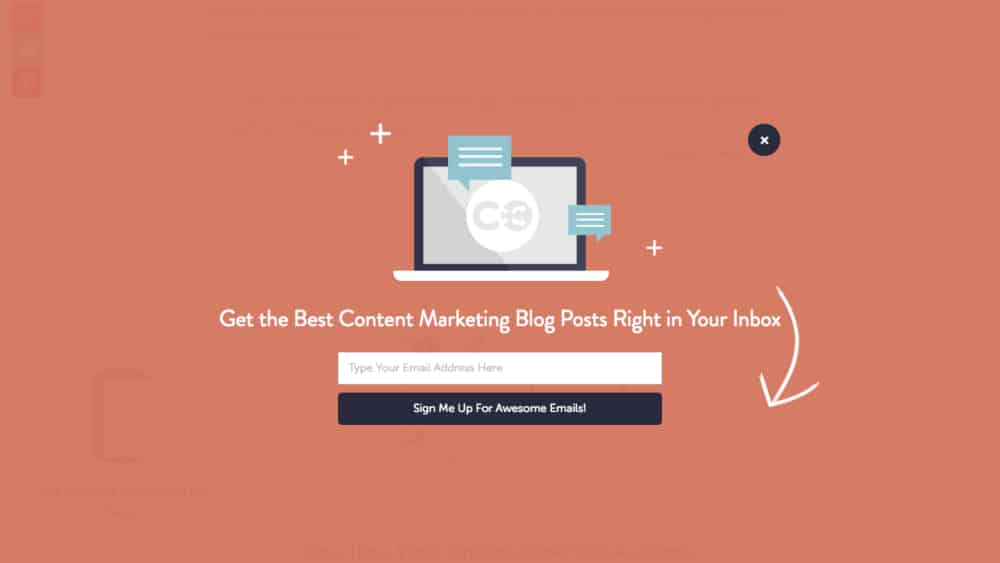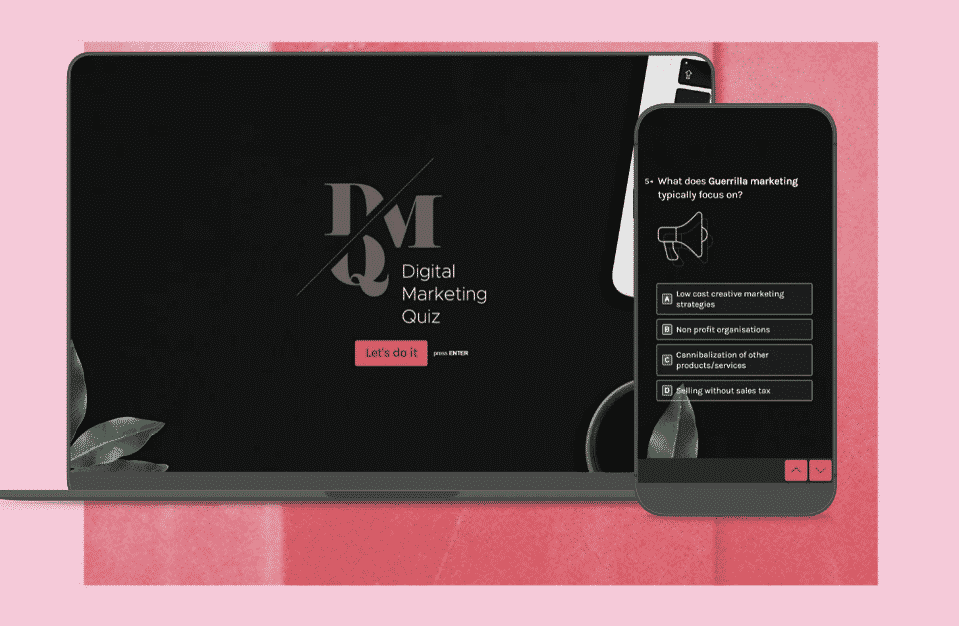This article has been contributed by Polina Shakhova.
Beat the competition and follow this step-by-step guide on how to get B2B leads this year.

Creating leads for B2B is top of mind for most marketers. Your all-important leads are what keeps your sales team happy, and what tells you that you’re marketing campaigns are effective.
There’s a difference between collecting contacts and capturing quality leads. The latter are people who have a real interest in what you offer and fit your target customer persona. These are the people that you will go on to convert into your customers.
Here’s a step by step guide for how to get quality B2B leads.
1. Identify Your Customer
With all marketing activities, you benefit from starting with the question ‘who is my audience?’ This helps you tailor your campaign to make it most effective.
First, decide who your target is and what you are trying to sell them. You may want to go through a few exercises to ensure you have a clear customer persona, so you know where to place your marketing efforts and what kind of content will resonate with the right people.
Going through this exercise is helpful in understanding how your potential customer behaves and will allow you to decide the best way of reaching out to them to ensure your marketing efforts are a success.
Consider what role and experience level your target customer persona is at, and what their biggest challenges or frustrations might be. Understanding a typical demographic helps too, as this will guide what tone and type of language is appropriate as well as where best to place the content you put out.
You may have different customer personas for the products or services your business offer, in which case your B2B lead generation campaigns will need to look different in order to most effectively reach your future customers.
2. Reel Them In
Second, create content that will capture the attention of your target audience. Once you have their attention, you need to provide content that they are willing to give up time to engage with.
Now you understand the challenges of your customers, you can start to plan what kind of content you can create to capture their interest. We can break this down into three sections for consideration:
- The key messages
- The format
- The placement
Start with your key messages and shape everything else around that. It’s that simple! But be careful to keep them to a maximum of 2, or 3 at a push. One simple and clear message is best, and the easiest way for the sentiment to stick in peoples’ minds.
There are many formats your content might take, from a simple pop-up to a whole webinar campaign. The possibilities in today’s marketing landscape are endless. We explore a few examples of B2B lead generation campaigns this later on in this post…
Finally, consider possible placement for your content. Whether it will go on your blog, your website, on social media only, or perhaps an email or newsletter. This depends on what suits the content, and of course, where it will be seen and consumed by your target audience.
3. Offer A Solution
So, they’ve engaged with your content, now what? Here’s where your call-to-action or ‘CTA’ comes in.
Simply put, the CTA is where you encourage them to take an action having consumed the content. The language should be simple and the action you want them to take should be clear, for example ‘download’, ‘subscribe’ or ‘call now’.
What goes at the end of your CTA is the important part. Now you are armed with knowledge about your potential customer, and you have attracted their attention with content, this stage is about pushing them further down the funnel. It’s your chance to inform them about who you are and what you do.
Getting someone to take action requires some convincing, so positioning it as a solution to a problem or concern is an effective tactic. Consider what questions they may need answering, what problems they are trying to solve, and how your offering fits into that.
Your approach could be anything from ‘download the latest trends report’, responding to a need to feel up to date, or ‘take our quiz’ helping them match up to your product or service, identifying what they are missing and how it could help.
This is the stage at which you capture their data. Your ‘solution’ is provided to them in exchange for their details, making the relevance of it even more important, so it feels like a fair trade-off.
These days, we don’t give up our personal data easily, so if someone is willing to do that, you can assume they have a serious interest in your content, and therefore your business.
Still not sure how it works? Here are some examples of marketing campaigns to get quality B2B leads.
a. Sign Up To Our Newsletter
Perhaps the most obvious and simple tactic is encouraging website visitors to sign up to a newsletter.
It’s effective because it allows you to communicate with them directly, and, if someone is willing to receive frequent emails from you, you can assume they are considering becoming a customer.
There are a number of ways to get them to subscribe.
- In your website footer: Placing a section in your footer with a simple CTA, and a single-line form to enter their email address is a great way of reminding people you have content to share across all pages of your site.
Image source: furrion.com
- Well placed CTAs: Make use of an already engaged audience and put a CTA to sign up to your newsletter somewhere within a great piece of content, like a blog post or webpage on your site.
Image source: producthunt.com
- Page pop-up: When your website visitors go to certain pages on your site, you could trigger a pop-up to get them to sign up. Where these go depends on your site content, but avoid the homepage.
Image source: coschedule.com
So you have a growing newsletter subscription list, now what?
Newsletters are an important tool for keeping your audience updated. Make sure your newsletters contain relevant and useful information. Don’t let all that effort go to waste though, use engagement analytics from your newsletters to create a list of quality leads, based on how many newsletters a contact has opened, or which links they’ve clicked.
Tip: Be clear about what subscribers can expect from your newsletter at the point of sign-up. The more information you give them about what’s to come, the less likely they are to unsubscribe later.
b. Interactive Content
70% of marketers say interactive content is effective for converting site visitors, so it’s worth considering for your next lead generation campaign.
For generating B2B leads, interactive content that captures data, whilst entertaining your site visitors works best, and what better than an online quiz?
I’m sure I’m not the only one who has been distracted by a Buzzfeed quiz or two, but we know they also work in a B2B environment.
An example of a quiz that works for B2B lead generation is one that tests your audience’s knowledge of a certain area, for example, “How much do you know about Digital Marketing?”. This appeals to our need or desire to be up-to-date. As previously mentioned, your content should provide the solution to their challenges.
Image source: typeform.com
The crucial part is getting people to finish the quiz, and therefore give you their data. Quizzes and surveys have an average completion rate of 57%, which although promising, means you have to consider how you get people over the line. Our advice? Keep the content relevant, and keep coming back to your customer persona.
Image source: salesfusion.com
You need to rely on the sunk-cost fallacy, which means getting people to invest time in the quiz so they will feel the need to complete it, rather than giving up before getting their result page. This means placing the data capture part just before the outcome is given – this is your CTA.
Tip: To get people through to the end, keep it short, relevant and fun!
Other examples of interactive content for collecting leads include running competitions or providing a calculator or tool related to your offering.
c. Be The Thought Leader
A useful tactic in getting people’s attention is by positioning yourself as the expert in your area or at least providing people with access to the experts.
In the B2B world, it’s all about keeping up to date with the latest information, hearing from the influential names in the industry and working out how to take that success back to your own business.
By offering these opportunities, you can attract potential customers and generate some quality leads.
Running webinars are a great example of this. Depending on how you are perceived in the market you can run a session yourself, invite key speakers, or run a joint session.
It’s a tried, tested and trusted approach. 73% of B2B marketers say webinars are the best way to generate high-quality leads.
An example of this could be a software company that runs a webinar about important trends for the following year within their industry. They could invite speakers from leading publications related to the field, or join up with commercial partners who share an audience.
Not only is attendance important, uploading a recording of the webinar can help you continue to gain views later down the line. Gating this content is your solution to collecting those leads.
The example below ticks all the boxes. The landing page once used to advertise signing up to attend the webinar is now a page where you can download the recording. It has a form to capture data and all the information you need to find out what the webinar is about.
The speakers are made up of a senior member of staff at the company who is running the webinar, joined by another thought leader in the industry from a company dealing with similar challenges.
The catchy title and the eye-catching graphics certainly help, too!
Image source: intercom.com
d. Give Something For Free
If you sell online systems, a free trial option could be an effective way of generating leads. It allows site visitors and potential customers to get a real experience of your product and enables you to communicate with them about it.
Image source: quickbooks.intuit.com
Quickbooks offers a free trial or a reduced price option on their homepage. Their ‘sign up for a free 30-day trial without a credit card’ gives a no-commitment offer to their site visitor, but of course, collects their data and turns them into a lead.
This can be a tricky tactic to make effective, as it usually works best at the end of the marketing funnel. Use your new data to your advantage and ensure you have this synced up to your email marketing tool so that you can send them useful information and keep them engaged.
4. Do Something Meaningful With Their Data
Your work is not over when the contact information is collected. Creating a really engaged, qualified lead is all about how you use their data to continue to provide value.
Having a good CRM (Customer Relationship Management) tool, along with streamlined syncing to your email marketing platform will allow you to enroll them in campaigns to do just this. Do make sure you are compliant with regional rules about data collection and required opt-ins, of course.
You can use the information you have already collected about them to keep the content relevant and useful, continuing to keep your customer persona and their challenges in mind.
Let’s Summarize
When creating your lead generation campaign ask yourself the following questions:
- Who is my target audience?
- What are they interested in?
- What problems can we solve for them in exchange for their data?
- How can I continue to engage them?
Remember, like with all marketing efforts, there’s no magic key, so keep tweaking and trying different approaches until something fits. As long as you keep coming back to your target customer persona, quality leads will come your way.











